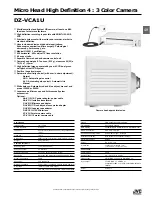
4-17
Tone
: A tone or “beep” is repeated at a programmable interval
Chime
: A music chime source (Old Folks At Home) located on the MCP card is played to the
listener.
External source
: Up to two external sources (such as a digital announcer or radio)—one
connected to the base board and one to a MISC card—played to the listener.
Digital Announcement on AA card
: If the system is equipped with an AA card, any port of
this card can be flagged as an MOH source and used to repeatedly play a message recorded
on the AA card to the listener.
Voicemail Sound File
: If the system has an optional Voice Mail card installed, up to 100
custom recorded sound files from the card can be used for MOH sources. For information on
creating the sound files, see your Samsung Voice Mail system documentation. Each
VMMOH source requires a dedicated VM port/channel.
Networking
The networking feature allows a number of OfficeServ 100 systems to be connected together
with some important feature transparency. The physical connection between the systems is
via a proprietary ISDN connection (a TEPRI card must be used) and is based on the QSIG
specification. The following features are supported between networked systems.
Call Completion, Busy Station (CCBS)
also known as Callback or Busy Station Callback.
When a station (A) in one system calls a station (B) in another system across the network
link, and station B is busy, station A can set a Callback to station B. When station B becomes
idle, the system will ring station A; when station A answers, the system will ring station B.
Call Completion, No Response (CCNR)
also known as Callback or No Answer Callback.
When a station (A) in one system calls a station (B) in another system across the network
link, and station (B) does not answer, station A can set a Callback to station B. When station
B indicates that its user is present by becoming busy (e.g. when the user lifts the handset),
and then becomes idle again, the system will ring station A; when station A answers, the sys-
tem will ring station B.
Call Forward Busy (CFB)
. This is a different feature from the normal Call Forward Busy and
is only used when the forward destination is in a different node of the network. Operation of
the feature is the same as the normal Forward Busy: when the forwarded station is busy, a
calling station will be forwarded to the programmed destination.
Call Forward No Response (CFNR).
This is a different feature from the normal Call Forward
No Answer and is only used when the forward destination is in a different node of the net-
work. Operation of the feature is the same as the normal Forward No Answer: if the for-
warded station does not answer after a programmed time, a calling station will be forwarded
to the programmed destination.
Содержание OFFICESERV 100 Series
Страница 1: ...OfficeServ 100 General Description Enterprise IP Solutions ...
Страница 11: ...OfficeServ100 1 3 Figure 1 1 OfficeServ 100 Basic Key Service Unit ...
Страница 78: ...4 42 Chapter 4 Business Features Package Sample SMDR Printout ...
Страница 90: ...Samsung Business Communications Brookside Business Park Greengate Middleton Manchester M24 1GS ...
















































